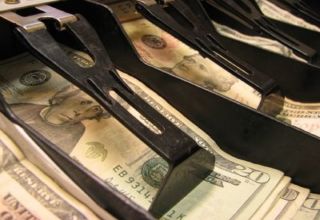1- Introduce a new employee to the cash register's various buttons and monitor screen organization. Describe the basic functions of the cash register in processing customer sales transactions, returns and exchanges.
2- Instruct the new cashier on how to load the receipt printer by removing an empty roll, dropping a new roll in and feeding it through the printer. Most receipt paper comes printed with colored ink at the end of the roll to alert the cashier when the paper needs to be changed.
3- Teach your employee how to count the cash register's till, a set amount of bills and coins for an individual cashier's shift. Advise him to maintain adequate levels of bills and coins for change in the cash drawer throughout the day by asking a manager for refills as needed.
4- Allow employees to practice ringing up different items by scanning each product's Universal Product Code (UPC) or entering the code manually into the cash register. Ask her to point out each product name, item number, UPC, price and quantity on the register's screen.

5- Show the employee how to apply special discounts to an order and scan coupons before totaling a sale and telling the customer the price. Cashiers should always check the date on a coupon to make sure it hasn't expired.
6- Demonstrate how to process the types of payment your business accepts, such as cash, gift cards, personal checks, money orders, credit and debit cards. Let your employee practice making change for cash payments by counting out the correct sum of bills and coins calculated by the cash register. Tell him to ask for identity verification when processing personal checks.
7- Teach your employee how to use the cash register's credit and debit card machine. Cashiers should ask a customer to swipe the card in the machine and wait for confirmation, then have the customer sign one receipt and keep the other. Inform your new cashier to store signed credit and debit card receipts inside the cash drawer.
8- Schedule the new cashier to observe an experienced employee at the register for at least an hour before allowing her to perform cash register transactions with supervision.
Tips & Warnings
Most item exchanges and returns require the assistance of a store manager. Returns are always given in the same form of the original payment, whether it was cash, credit or debit card.
Cashiers should always keep large bills over $20 beneath the cash drawer inside the register for safety.
2- Instruct the new cashier on how to load the receipt printer by removing an empty roll, dropping a new roll in and feeding it through the printer. Most receipt paper comes printed with colored ink at the end of the roll to alert the cashier when the paper needs to be changed.
3- Teach your employee how to count the cash register's till, a set amount of bills and coins for an individual cashier's shift. Advise him to maintain adequate levels of bills and coins for change in the cash drawer throughout the day by asking a manager for refills as needed.
4- Allow employees to practice ringing up different items by scanning each product's Universal Product Code (UPC) or entering the code manually into the cash register. Ask her to point out each product name, item number, UPC, price and quantity on the register's screen.

5- Show the employee how to apply special discounts to an order and scan coupons before totaling a sale and telling the customer the price. Cashiers should always check the date on a coupon to make sure it hasn't expired.
6- Demonstrate how to process the types of payment your business accepts, such as cash, gift cards, personal checks, money orders, credit and debit cards. Let your employee practice making change for cash payments by counting out the correct sum of bills and coins calculated by the cash register. Tell him to ask for identity verification when processing personal checks.
7- Teach your employee how to use the cash register's credit and debit card machine. Cashiers should ask a customer to swipe the card in the machine and wait for confirmation, then have the customer sign one receipt and keep the other. Inform your new cashier to store signed credit and debit card receipts inside the cash drawer.
8- Schedule the new cashier to observe an experienced employee at the register for at least an hour before allowing her to perform cash register transactions with supervision.
Tips & Warnings
Most item exchanges and returns require the assistance of a store manager. Returns are always given in the same form of the original payment, whether it was cash, credit or debit card.
Cashiers should always keep large bills over $20 beneath the cash drawer inside the register for safety.
How to Teach Cash Register Use
4/
5
Oleh
samy






